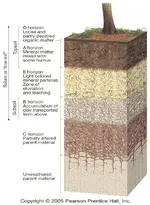Coins "migrate" to different depths, at different rates according to the soil composition, soil density, amount of rainfall and overall mass of the coin.
Soil forms in layers, rain moves particles from the surface layers to the lower layers, rain also leeches salts and clays to the lower layers. This process causes things to move downward, a rock laying on the surface will move down through each layer of soil until it reaches the point where it's density matches that of the surrounding soil.
Soil formation starts on the surface, the rest happens underground.
The theory that soil builds on top of the coins is correct, the theory that they sink is also correct. As each successive layer of soil builds on top of the coin the layers below it are moving downward. Take a stack of paper place a coin on top, now remove the bottom sheet and place it on the top of the stack, continue this process and eventually the coin will be at the bottom, soil moves the same way.
There is more info on the process here
Plant and Soil Sciences eLibrary
Four Soil Forming Processes
•Additions: Materials added to the soil, such as decomposing vegetation and organisms (organic matter--OM), or new mineral materials deposited by wind or water.
•Losses: Through the movement of wind or water, or uptake by plants, soil particles (sand, silt, clay, and OM) or chemical compounds can be eroded, leached, or harvested from the soil, altering the chemical and physical makeup of the soil.
•Transformations: The chemical weathering of sand and formation of clay minerals, transformation of coarse OM into decay resistant organic compounds (humus).
•Translocations: Movement of soil constituents (organic or mineral) within the profile and/or between horizons. Over time, this process is one of the more visibly noticeable as alterations in color, texture, and structure become apparent.
Soil Profiles and Horizons
Through the interactions of these four soil processes, the soil constituents are reorganized into visibly, chemically, and/or physically distinct layers, referred to as horizons. There are five soil horizons: O, A, E, B, and C. (R is used to denote bedrock.)
There is no set order for these horizons within a soil. Some soil profiles have an A-C combination, some have an O-E-B, an O-A-B, or just an O. Some profiles may have all the horizons, O-A-E-B-C-R. And some profiles may have multiple varieties of one horizon, such as an A-B-E-B.








